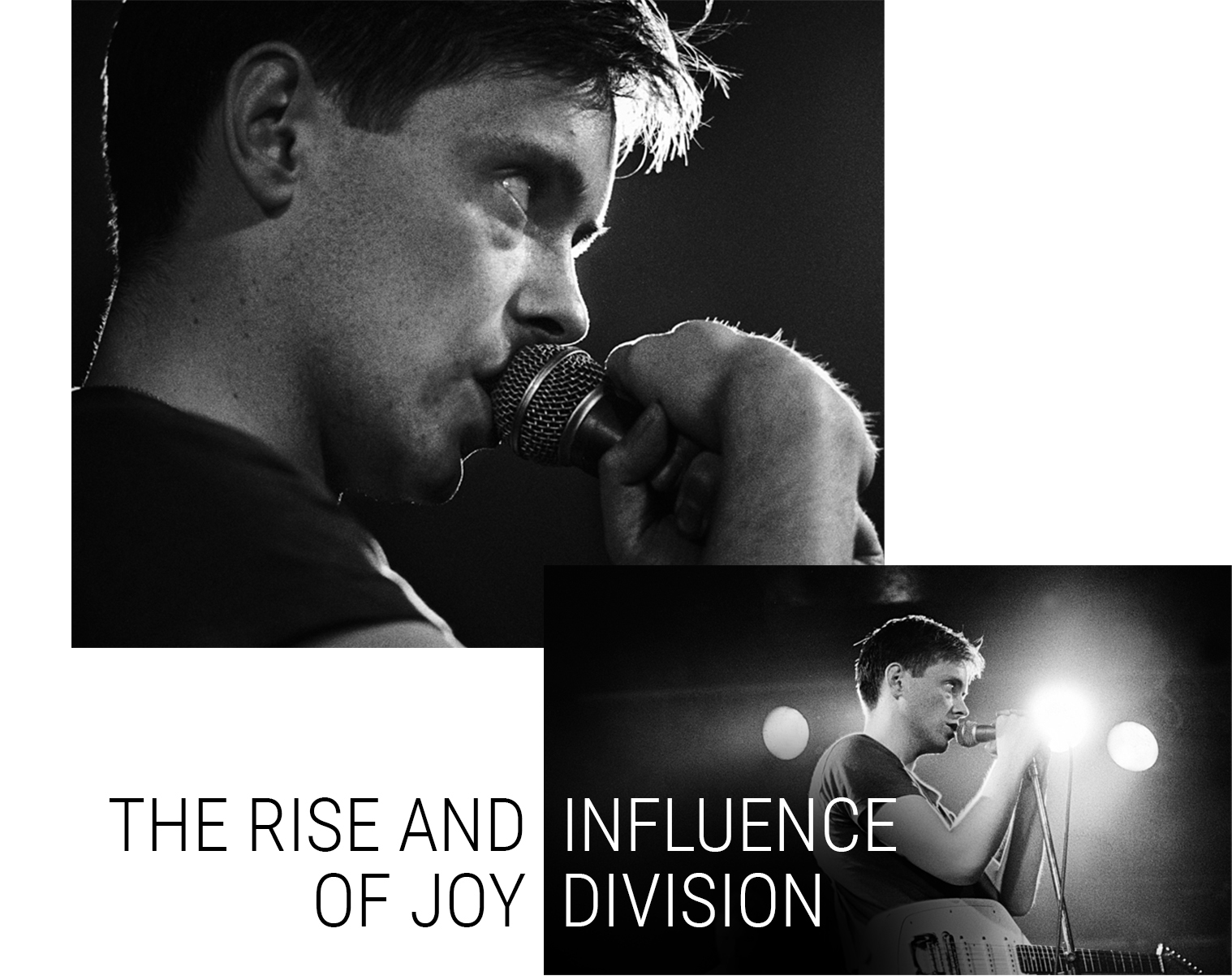Days of Punk
| Fashion
The Rise and Influence of Joy Division: Echoes That Still Resonate
Posted by Michael Grecco

When one dives into the world of post-punk, it’s impossible not to encounter the haunting and profound reverberations of Joy Division. Emerging from the gritty streets of Manchester in the late 1970s, the band’s profound influence on the post-punk genre is as unmistakable as it is enduring. With a sound that was both raw and atmospheric, they crafted a unique blend of music that would inspire countless bands for generations to come.
The formation of Joy Division was a testament to the zeitgeist of their time. After attending a Sex Pistols gig in 1976, Bernard Sumner and Peter Hook felt the undeniable pull of music. With the inclusion of Ian Curtis as their iconic vocalist and Stephen Morris on drums, the band initially named “Warsaw” was born. However, to avoid confusion with another band, they soon rebranded themselves as Joy Division, drawing inspiration from the novel “House of Dolls”.

BOSTON – CIRCA 1982: Musicians Bernard Sumner and Peter Hook of the English rock band New Order performs live in Boston, Massachusetts on CIRCA 1982. (Photo by Michael Grecco)
From their onset, Joy Division was committed to authenticity. Their debut album, “Unknown Pleasures”, released in 1979, was a sonic masterpiece that melded the rawness of punk with the experimental elements of post-punk. Curtis’s deep, mesmerizing vocals, combined with Hook’s bass lines, resulted in tracks like “She’s Lost Control” and “Disorder”, which quickly became anthems for their generation.
However, with rising fame came immense pressure, especially for Curtis. Battling personal issues, epilepsy, and the challenges of fame, Curtis was in many ways a soul caught between worlds. His introspective lyrics, tinged with themes of despair and alienation, took on an even deeper resonance after his tragic passing.
Ian Curtis’s untimely death in 1980 wasn’t just a monumental loss for the band, but it also sent shockwaves through the broader music scene. With a North American tour on the horizon and their sophomore album, “Closer”, ready for release, Joy Division was left in the shadows. Curtis’s passing, as devastating as it was, further cemented the band’s legendary status, with “Closer” and its single “Love Will Tear Us Apart” becoming posthumous classics.
The surviving members later regrouped to form New Order, which achieved success in its own right. Still, the legacy of Joy Division endured. Their sound inspired bands like The Cure, Radiohead, and Interpol. Their minimalist aesthetic, exemplified by Peter Saville’s iconic designs, became emblematic of the post-punk era.
Looking back, Joy Division’s meteoric rise underscores the ephemeral nature of life and art. From Manchester’s heart to the global stage in such a brief period, they created a sound that remains unparalleled. Their timeless and evocative music stands as a testament to music’s ability to capture the human experience in its full spectrum.
As the echoes of Joy Division continue to reverberate through today’s music scene, their legacy serves as a testament to the enduring power of art to touch our souls. And for those eager to explore the roots of the punk and post-punk movement more closely, there’s a tangible gateway. Want to get a close-up look at some of the very first pop-punk artists? Order a copy of Michael Grecco’s punk rock photography book, Punk, Post Punk, New Wave: Onstage, Backstage, and In Your Face, or delve deep into his vast collection of punk rock prints today. This journey into the visual realm of punk offers another layer of appreciation for the rebellious spirit that bands like Joy Division embodied so powerfully.

